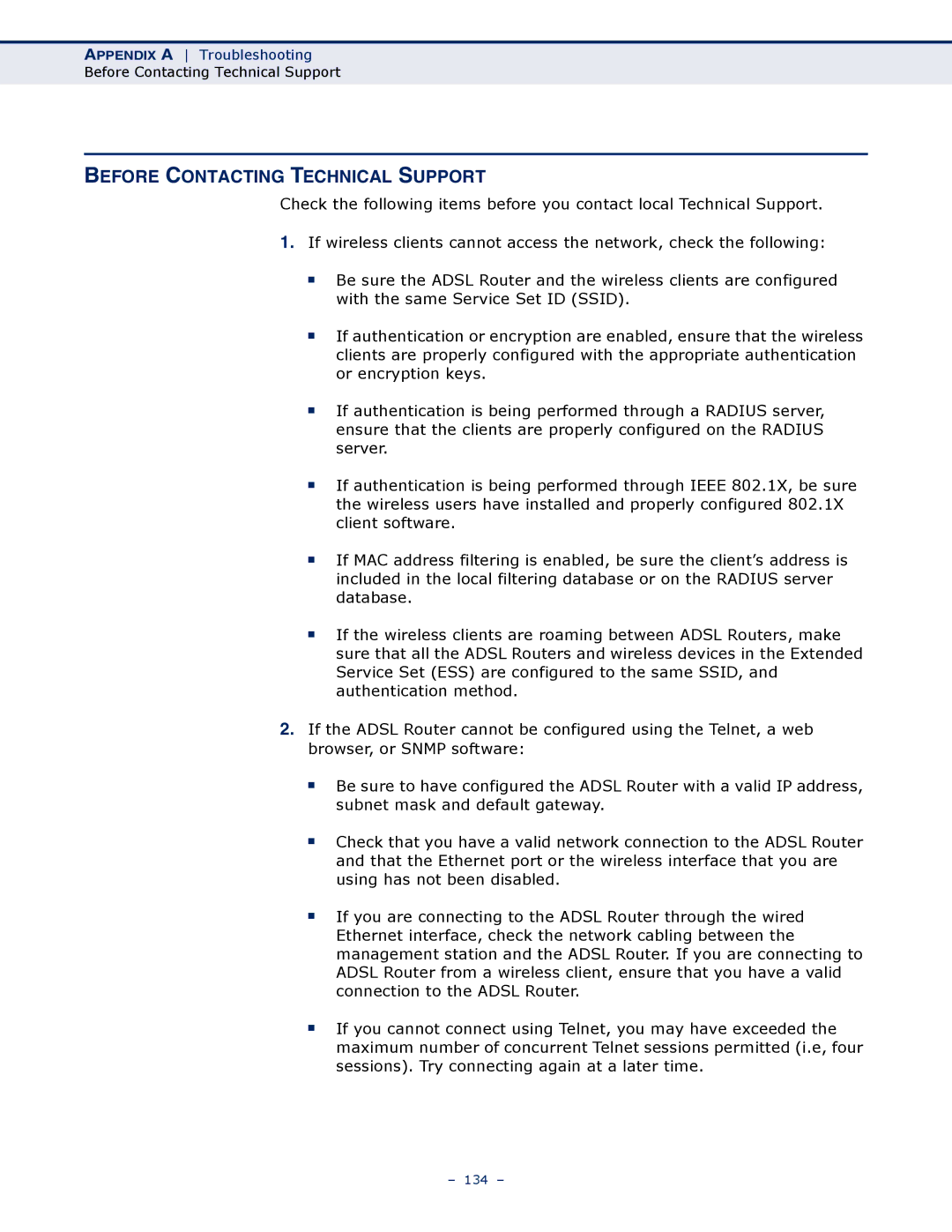
APPENDIX A Troubleshooting
Before Contacting Technical Support
BEFORE CONTACTING TECHNICAL SUPPORT
Check the following items before you contact local Technical Support.
1.If wireless clients cannot access the network, check the following:
■
■
Be sure the ADSL Router and the wireless clients are configured with the same Service Set ID (SSID).
If authentication or encryption are enabled, ensure that the wireless clients are properly configured with the appropriate authentication or encryption keys.
■If authentication is being performed through a RADIUS server, ensure that the clients are properly configured on the RADIUS server.
■If authentication is being performed through IEEE 802.1X, be sure the wireless users have installed and properly configured 802.1X client software.
■If MAC address filtering is enabled, be sure the client’s address is included in the local filtering database or on the RADIUS server database.
■If the wireless clients are roaming between ADSL Routers, make sure that all the ADSL Routers and wireless devices in the Extended Service Set (ESS) are configured to the same SSID, and authentication method.
2.If the ADSL Router cannot be configured using the Telnet, a web browser, or SNMP software:
■
■
Be sure to have configured the ADSL Router with a valid IP address, subnet mask and default gateway.
Check that you have a valid network connection to the ADSL Router and that the Ethernet port or the wireless interface that you are using has not been disabled.
■If you are connecting to the ADSL Router through the wired Ethernet interface, check the network cabling between the management station and the ADSL Router. If you are connecting to ADSL Router from a wireless client, ensure that you have a valid connection to the ADSL Router.
■If you cannot connect using Telnet, you may have exceeded the maximum number of concurrent Telnet sessions permitted (i.e, four sessions). Try connecting again at a later time.
– 134 –
